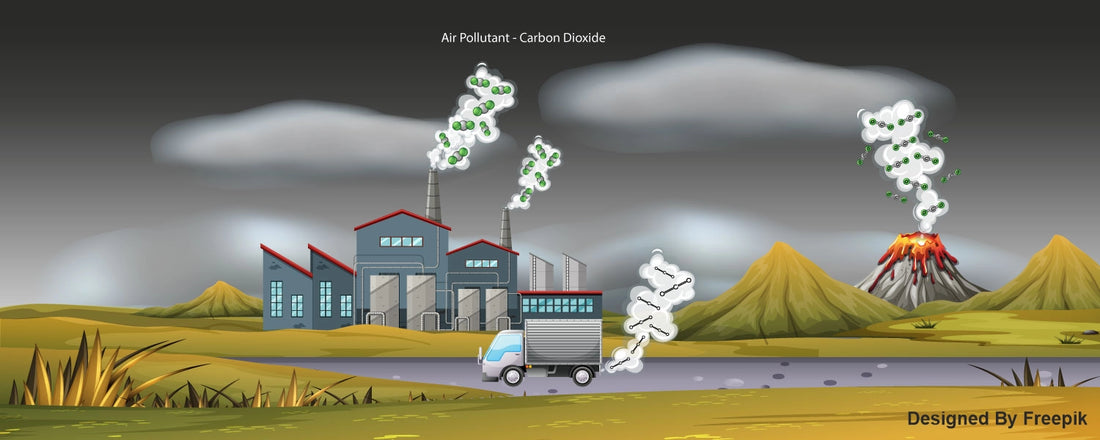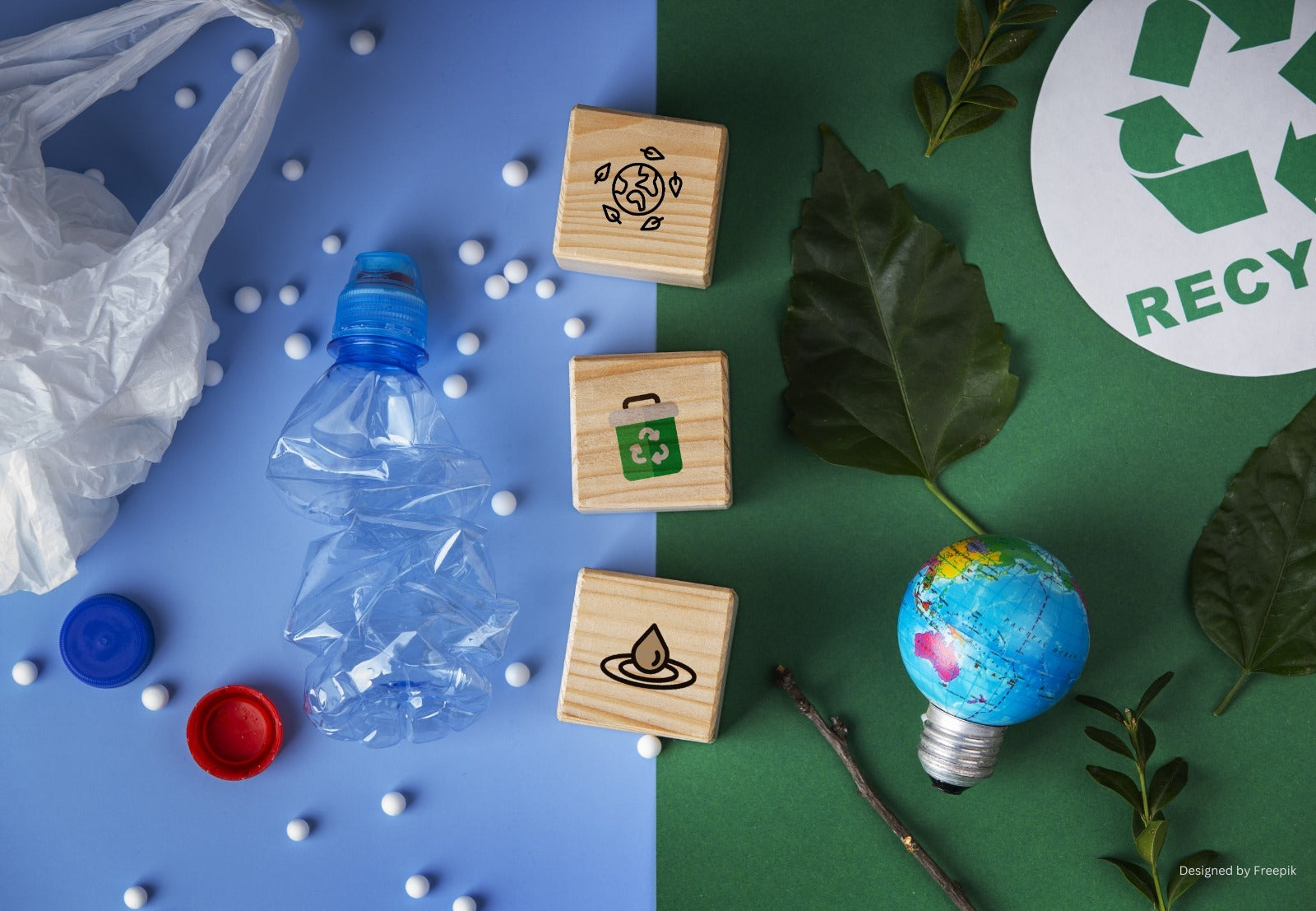A greenhouse is a building made of glass or plastic used to grow plants that require special temperatures to thrive. Greenhouses were first popularized in colder climates, like Korea and Europe, to grow plants in harsh winters by heating the enclosed structure (primarily glass in those times) and trapping the heat inside.
Greenhouse Gases (GHGs) mimic this effect on a global scale and cause the earth to warm over time by trapping heat in the atmosphere.
First, what are Greenhouse Gases and why should we worry about them?
Carbon Dioxide (CO2), Methane (CH4), Nitrous Oxide (N2o), and Fluorinated Gases (CFCs) are known as greenhouse gases because they trap heat in the earth’s atmosphere. When the greenhouse gases are in balance, they help keep the sun’s heat in the atmosphere instead of being reflected into space.
CO2 accounts for 75% of the greenhouse gases in the atmosphere. ~37 Gigatons of CO2 are added to the atmosphere each year, per data from the International Energy Agency, while the rate of growth of annual emissions has slowed down, we have not yet been able to reverse the trend. Unfortunately, most of the increase in these emissions is from Asia.
The long-term build-up has caused the atmospheric concentration of CO2 to increase from 280 parts per million in the Industrial Age to 417 parts per million today.
Methane traps even more heat than CO2; and the atmospheric concentration of methane has increased from below 1000 parts per billion in 1922 to almost 2000 parts per billion in 2022. This leads to a 20-30% increase in global warming. While many sources of methane emission are difficult to control e.g. agriculture and wetlands, we can still help by reducing fossil fuel consumption and reducing waste in landfills.
Nitrous Oxide is even more alarming since it causes 300 times more warming than CO2. Synthetic fertilizers in agriculture are a leading cause of NO2 emissions and are difficult to control due to rising nutritional needs. Cars and motorized vehicles are also a significant source of nitrous oxide. Strict pollution standards can help reduce emissions from this source.
Fluorinated gases are almost entirely of human origin and have no natural source. Their warming potential is 24000 times higher than natural gases (CO2, N2O, and Methane) and they persist in the atmosphere for thousands of years. They are also very difficult to remove and any increase in these gases creates long-term harm. Aluminum and semiconductor industries cause much of these emissions. Air conditioning and refrigeration are also a leading cause of fluorinated gas emissions.
Together, greenhouse gases lead to a higher degree of global warming and an increase in extreme weather events (flash floods), droughts, wildfires, and hurricanes, causing trillions of dollars in economic loss and hardship to millions.
What kind of activities are increasing GHG?
Energy supply: Largely due to the worldwide expansion of coal- and gas-fired power generation. This contributed to ~ 36% GHG. However, it is also one of the only sectors where some countries have made progress in reducing emissions by switching to lower-emission fuels and scaling up renewable sources.
Industry: This is the second largest contributor to direct emissions accounting for 25 percent of the total. This is primarily due to burning fossil fuels and the usage of certain chemicals in manufacturing.
Agriculture and LULUCF (Land use change): Agriculture surprisingly accounts for a large share of GHG emissions. Methane Gas emissions from livestock and emissions due to the use of fertilizers are the leading causes.
Transport: Fossil fuels continue to account for almost 90% of transport fuel worldwide. Increasing adoption of more fuel-efficient vehicles and shift to newer technologies like EVs needs to accelerate rapidly to reduce emissions from this sector.
Buildings and decomposing waste accounts for just under 10% of emissions. Proper waste segregation and management can help reduce emissions.
What are some Good Steps that you can take which help reduce GHG emissions?
- Energy Consciousness: Saving even a little electricity makes a big difference, since in India, we still largely rely on burning coal to generate electricity.
- Shifting from CFLs to energy-efficient LEDs is a great step.
- Opting for a 5-star rated AC and appliances makes a big difference over the long term.
- Turning off appliances from the panel (not the remote) is a simple but effective way to save electricity.
- Double panel windows or windows with sun protection films can help reduce the need to run the AC.
- If you live in an independent house, consider adding solar panels to the roof.
- Finally, consider adding a green roof (use plants which reduce sun reaching the rooftop) or use heat reflective paints on the roof. This will not only reduce the heat absorbed but also reduce your electricity bills in the summer.
2. Food Consciousness: Small changes to your diet can add up to make a big impact:
- Reducing the amount of red meat you eat will make a significant difference, just switching one meal in a week from red meat (mutton, buff, pork) to white meat (chicken or fish) or even better vegetarian food will be a good start.
- Don’t waste food. - Only make as much as you need and as far as possible avoid wasting food. Not only does growing food add to greenhouse gas emissions but rotting food also does the same. Try to recycle food waste as much as possible by composting it to make natural fertilizers or making bio-enzymes to clean your home.
3. Travel Wisely:-
- Consider the energy impact of your mode of transport. If possible, choose services like CityFLO buses or metros for your travel instead of taking a car or a taxi.
- Even opting to not own a car and instead use taxis when needed is a very good step since you reduce the carbon footprint of owning a car.
- Getting your car serviced regularly and ensuring proper tire inflation can save you almost Rs. 3800 annually and reduce 100 kg CO2 emissions.
- Keeping your car AC at 24 degrees can help reduce your fuel burning as well.
- Finally consider opting for a bicycle even a battery-powered one instead of a scooter for short commutes, not only is it good for the environment, it is also good for your health.
You don’t need to do everything at once to make a difference, even adopting 1-2 of the steps outlined at first can be a great start and make a measurable difference to your emission footprint over time.







